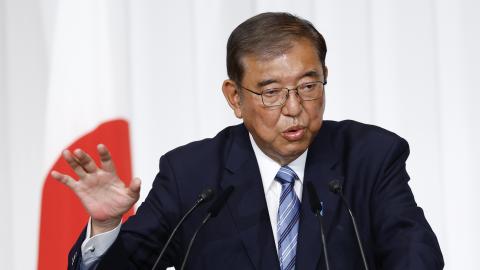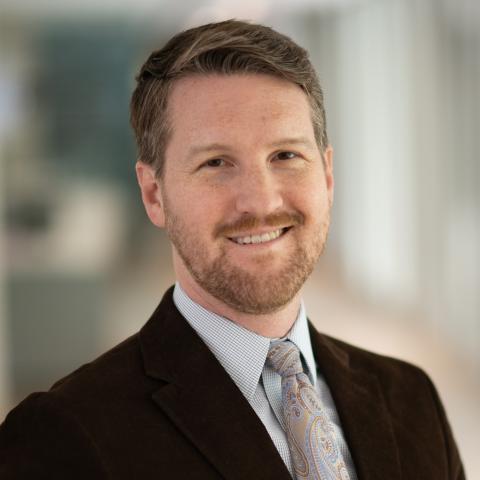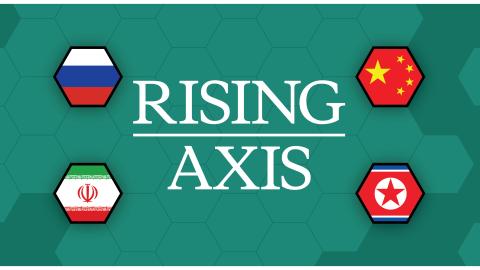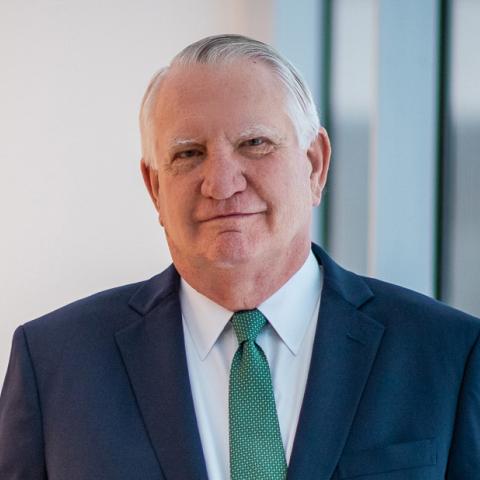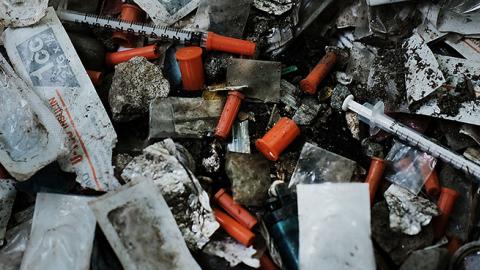p(firstLetter). Drug trafficking is now the most murderous criminal activity in American history. Overdose deaths from illegal drugs passed 50,000 in 2015 — many times the number of Americans killed by all Islamic terrorists over almost 20 years. Yet stopping the skyrocketing body count will require overcoming a pervasive misunderstanding of how drug abuse and addiction are caused.
Blaming the victim has created confusion and policy failure. No one starts using drugs intending to become an addict. While addiction may seem like slow-motion suicide, most addicts do not want to die — the poison hooks them, taking over their life. Media reports of addiction are mixed with entertainment and social media that present drug use as commonplace. More and more Americans are drawn to the flame, many introduced to substance abuse by a friend or family member. “Just say no” is dead. Yes, encouraging young people not to use drugs can save individual lives, but personal morality is not the right battleground.
There are multiple factors that may be contributing to this crisis. Does expanding supply trigger drug experimentation? Does human biology simply include a dangerous susceptibly to runaway addiction? Or is cultural confusion about freedom and self-destruction enabling and normalizing drug addiction? All these factors (and possibly more) likely play a part. But what causes an epidemic is the addictive poison itself, spread in sufficient quantities. Ultimately, America’s addiction catastrophe is properly understood as a mass poisoning.
As a result, cutting the drug supply — and only cutting supply — will reduce deaths and addiction. The evidence for this conclusion is manifest; ignoring it will cost countless more lives.
Curtailing Supply
There was no demand for crack before it was created and distributed by Colombian traffickers. There was no demand for meth before it was created by criminal gangs and then “cooked” by users. Similarly, there was no massive abuse of prescription opioids until they were irresponsibly marketed by some manufacturers and prescribed by physicians contrary to sound medical practice.
The increase in heroin and fentanyl use, addiction, and deaths followed the increase in the supply from Mexico and China. Conversely, during the George W. Bush Administration, when the supply of cocaine, crack, and meth began declining, use declined. Now, as cocaine production in Colombia has grown again, use and overdose deaths are climbing. Finally, the leveling trend in the abuse of prescription opioids has followed enforcement actions against pill mills and criminal physicians — that is, it follows an apparent reduction in supply.
Americans have long accepted the claim that it is impossible to stop drug trafficking, even in the face of extensive evidence to the contrary. Anti-terrorism efforts must stop just a few dedicated individuals. This is a tough problem that Americans see solved every day. Yet the poisoning of millions is supposedly unstoppable. It isn’t.
Moreover, misunderstanding the cause of drug epidemics has shifted the policy debate away from the right goals: reducing the supply of drugs and returning addicts to sobriety. With deaths at historic levels, some still maintain that drug use is a right or otherwise not worth the cost of controlling. This harm reduction position is at odds with both supply control and all forms of prevention education — and increasingly at odds with treatment understood as having the goal of abstinence.
Many drug policy progressives now insist on medically supervised addiction. Such medication assisted treatment (MAT) amounts to government-supervised facilities for drug use (injection sites) or even government-supplied drugs for the addicted. The model here is the Netherlands, where endless, government-supported drug use is treated as a means of treating addiction. These addicts continue to be victimized by their own country, fostering a separate and profoundly dysfunctional underclass.
In the face of expanding supply, prevention and treatment efforts cannot be strategic — they can save individual lives, but new lives will be put at risk. This is merely squeezing an uncontained balloon. Moreover, if supply is reduced significantly, use and addiction will necessarily fall without respect to prevention and treatment efforts. The evidence of almost 50 years indicates that prevention and treatment efforts only contribute to strategic results when supply is reduced.
Prevention and treatment save lives, but their strategic effect is overwhelmed if supply and trafficking are not curtailed.
Policy proposals placing emphasis on reviving drug overdose victims mistake cause and effect. In the case of opioid addiction, the cause is the opioids themselves and increasingly, fentanyl. Revived addicts are still victims, and, sadly, many treated for opioid addiction will relapse in the face of burgeoning supply.
Fentanyl and its variants are now driving the rapid rise in opioid deaths and drug overdoses in general. Information, albeit inadequate, suggests China is the source for these substances and the precursors to produce them. It seems there is no large-scale legitimate use for these chemicals outside of what is supposed to be controlled production for limited medical use — thus, industrial diversion is not a primary issue. Unfortunately, however, this means U.S. officials cannot attack fentanyl directly, but only via Chinese enforcement action.
China is likely to be sensitive to sustained pressure by authoritative American voices, whether from federal officials or prominent private individuals. America should ramp up this pressure soon. If executive branch officials cannot lead the charge, individuals from outside the executive, including members of Congress, should take the lead.
The Chinese are likely to act only in response to threats to their political or economic interests. Spurring them to act may require frequent confrontations over their performance in stopping fentanyl trafficking to the U.S. and Mexico. But sustained, genuine pressure works.
It is also possible that fentanyl and precursors are being trafficked from other Asian countries. Hence further — and swift — investigation is needed.
Bolstering Intelligence Resources
It is reasonable to anticipate that traffickers will seek to move production in response to pressure. If that happens, other Asian nations can be pressured by a range of escalating sanctions. Identification, especially public charging of foreign criminals, can be particularly helpful in disrupting trafficking operations, along with attacks on criminal funds and individuals through U.S. law.
An attack of sufficient power to collapse trafficking networks requires detailed intelligence. Such intelligence is also needed to prod foreign governments to act within their authority. Greater intelligence resources are also crucial for attacking trafficker finance, corruption operations, and measuring policy effectiveness. Attacking networks and responding to the drug epidemic requires comprehensive, real-time data. This data — from foreign intelligence services, domestic law enforcement agencies, and public health reports — should be fused into a strategic whole.
Fortunately, American intelligence has developed tools to attack such networked terrorist threats. At over 50,000 overdose deaths a year, the mass poisoning of drug trafficking is the most profound attack on America today. It is time to fully unleash intelligence tools on trafficking networks.
Without adequate intelligence, the magnitude of trafficking on the internet and “dark web” is unknown. Available information suggests it is significant, however. Federal drug enforcement has generally made electronic investigations a low priority, rejecting proposals to disrupt such markets by means of false sites, service denials, and cross-referencing data from multiple sources. All national security capacities are not yet deployed against opioid trafficking on the internet; this should change immediately. Past efforts to mount internet attacks by federal drug enforcement agencies have been crippled by ignorance, lack of experience, lack of vision, and complacency. The primary strategic goal should not just be to make future cases, but permanent market disruption; make it difficult to use the internet for trafficking by destroying the ability of buyers to connect with sellers.
Even the incomplete information on the opioid epidemic suggests that enforcement actions against pill mills and criminal physicians have reduced addiction and death driven by U.S. pharmaceutical sources. This has been a “supply control” success. Nonetheless, there is evidence of lower, but continued diversion. The pharmaceutical industry, the health insurance industry, and the federal government (the largest single health-care payer) all have information that should be brought together to identify and stop criminal diversion. The key point should be to focus attention on the biggest threat and its biggest components. There are regular reports of misuse of federal health-care funds to support addiction; some reports suggest areas where such practices are concentrated, which may serve as a starting point for enforcement actions.
Disrupting Networks
Colombia is now back to producing more cocaine than it did prior to the dramatic drop in coca cultivation through Plan Colombia, which was largely due to the cooperation of former President Alvaro Uribe. Aside from a corresponding rise in cocaine overdose deaths, there are now reports of deaths resulting from cocaine-fentanyl mixtures. This deadly combination was seen about 10 years ago and may now be poised to cause harm on a greater scale. Much more fentanyl is available to Mexican traffickers carrying opioids and cocaine into the U.S.
The Obama administration downplayed drug control in Colombia to pursue other goals. Colombian institutions are, again, put at risk by narcoterrorism. The previous security partnership needs reinvigoration, but the U.S. should make clear that the current trends are unacceptable for an ally and trading partner. A first step might be to have a government official or prominent private citizen warn the Colombian president that “if he doesn’t stop sending the cocaine, perhaps it is time to ask him to stop sending the coffee and the flowers.” Fortunately, former-president Uribe remains politically active and he knows how to attack the cocaine problem — Colombians would be wise to give him the job.
Contrary to the widespread belief that prescription diversion is driving the opioid crisis, available evidence indicates that most opioids and other illegal are produced outside the U.S. Further, these drugs seem to be arriving from Mexico. It is likely that most of them pass within six feet of a uniformed federal officer at our southern border. This is an unacceptable failure. Additional personnel will be useful, but the most important missing element is access to intelligence about trafficker operations. Enforcement agencies need to “see” into Mexico, and they need to see the structure of foreign and domestic trafficking networks.
Drug enforcement agencies and prosecutors need to treat individual cases as a means of network disruption, not as ends in themselves. In fact, it is likely that many smaller cases involving lesser charges that can be brought quickly will damage street-level trafficking networks more effectively than larger cases requiring longer investigations. In short, enforcement efforts need to become urgent and strategic.
Moreover, traffickers deserve stiff prison sentences. Such sentences are important leverage for turning traffickers against each other. Prison capacity for these death merchants must be made available to save lives. Enforcement pressure needs to be scaled to the threat.
Overall, drug enforcement management is insufficiently threat-based and seldom shifts resources rapidly to the greatest threats. While drug trafficking is killing more Americans than all other criminal activity combined, drug enforcement does not receive resources remotely proportional to the threat. The criminal-justice system is merely trying (and failing) to cope with the drug threat. It must come to see its mission as systematically destroying the threat — and plan, budget, and staff accordingly.
A Counter-Drug Strategy
An effective counter-drug strategy must attack at three points: source, distribution, and retail. If any one point of attack is particularly effective, it will substantially reduce use. It is probable, however, that the different points of attack will be effective in different degrees, while results will be cumulative and reinforcing.
At the retail level of street sales and use, the targets are whole communities, large geographic areas. Local and state efforts will be most important because there are insufficient federal resources to create the magnitude of the response required at the retail level. Local and state elements can be “enlisted” in a more unified national effort. That means encouraging and offering supplementary, strategic support with national personnel and resources.
Nevertheless, it may be critical to begin with willing state and local partners — those who commit their personnel and resources to the new strategy. These initial sites will also refine the elements of the strategy and demonstrate the effectiveness of more controversial components. Sites should be in priority areas and on as wide a scale as circumstances permit, but they should also be understood as points from which localized effort will flow outward — as ink spots on paper. Taking back individual communities in this way is an application of counterinsurgency concepts — it is also an established means of fighting epidemics.
At the retail level, the dealer and user are the center of gravity. Street-level enforcement needs to respond to opioid distribution as an immediate threat to life. Every sale can bring an overdose and every overdose can result in death. Each dealer is more like an active shooter than a house thief. Yet police response is frequently more focused on victim than on victimizer. The low-level dealer is also a low priority for enforcement personnel and prosecutors. This misguided policy is feeding the epidemic at the local level.
Accordingly, street-level enforcement should be reconceived in two ways. First, much greater urgency should be given to finding and incapacitating the dealer. Second, arresting users should be seen as a public health measure to screen for and treat addiction, as with the successful drug court model.
Drug courts and diversion programs are already a major source of treatment admissions in the U.S. But this has been understood as a means of reducing the burden on the criminal-justice system. It should be seen as a necessary means of getting addicts who are in denial (as the vast majority are) into treatment and keeping them there through detoxification and stable sobriety. Street-level enforcement should be targeted to collapse dealer networks and should be tuned to become an intake channel for treatment.
All this will mean more arrests and more resources devoted to creating appropriate responses for users and dealers after arrest. Occasional, non-addicted users have a much lower probability of arrest at the point of drug sales because their purchases are infrequent. The risk to addicts is greater because they commonly need multiple doses per day. Thus, the normal pressure of street-level enforcement will tend to involve the larger dealers and the heavier users. Arrest and referral to treatment will save the lives of the addicted and even the arrest and warning of occasional users could be a potentially life-saving deterrent.
Such enforcement effort needs to be targeted, however. The obvious way to locate addicts and their dealers is to follow the reports of overdose victims. These reports provide a painful — but clear — geographic map of the epidemic. That map should be the basis for identifying priority areas nationally.
Currently, national information on overdose deaths lags by more than a year. This is unacceptable, and public health officials should be held accountable for creating a local, state, and national, real-time map of the epidemic. Preventing death means stopping traffickers and bringing effective outreach to the addicted in real time.
Finally, while attacking the source and border interdiction take the form of “outside-in” efforts, street enforcement and treatment involves an “inside-out” movement. Is this possible? Can individual communities make progress in the absence of full national success against the drug supply? Can a neighborhood-by-neighborhood strategy work?
Certainly, there is a risk of the epidemic moving back into improved areas from nearby trafficker enclaves. But, in fact, there are many law enforcement examples demonstrating that crime and drug trafficking is displaceable and containable with sustained, effective effort. The pace of the attack matters, and must run ahead of criminal replacement efforts. Local law enforcement agencies successfully contain certain crimes within specific geographic areas, and respond aggressively if criminals overstep boundaries. As in other matters, overwhelming the problem requires capable leadership with the authority, resources, and determination to prevail. For each part of the strategy above, it is important that one individual receive overall responsibility and that this individual understand that they will be removed in the absence of rapid progress. There is no accountability if there is no individual accountability.
The future of addiction in America rests on whether the supply of addictive drugs is dramatically reduced. The drug policy of the Trump administration will determine whether use and addiction are diminished or if they are more deeply embedded in American life — further expanding the underclass of addicted individuals living in misery and dying too young.


